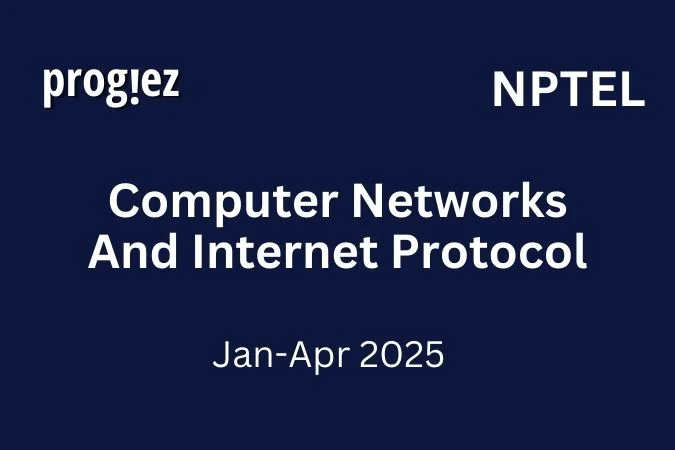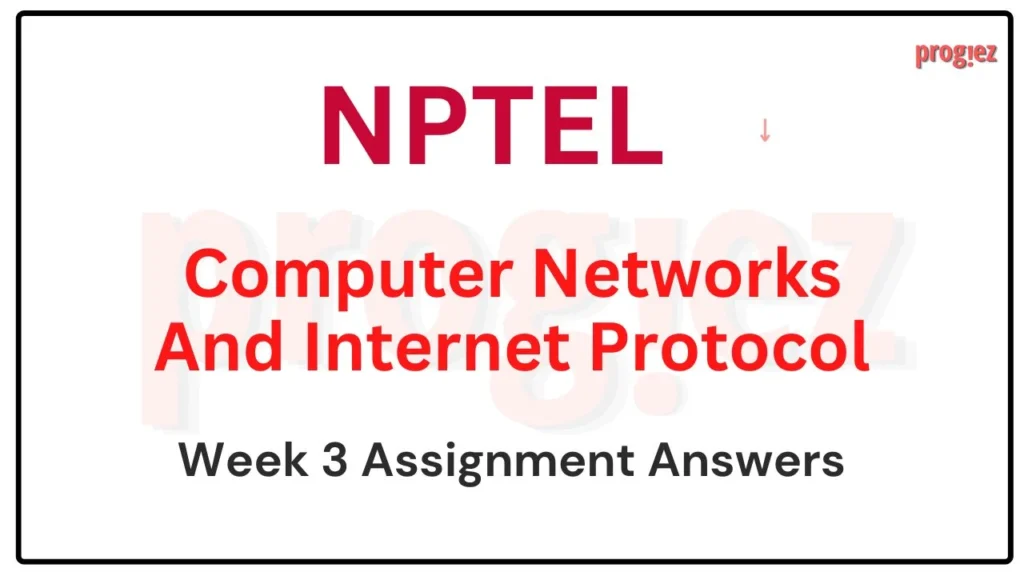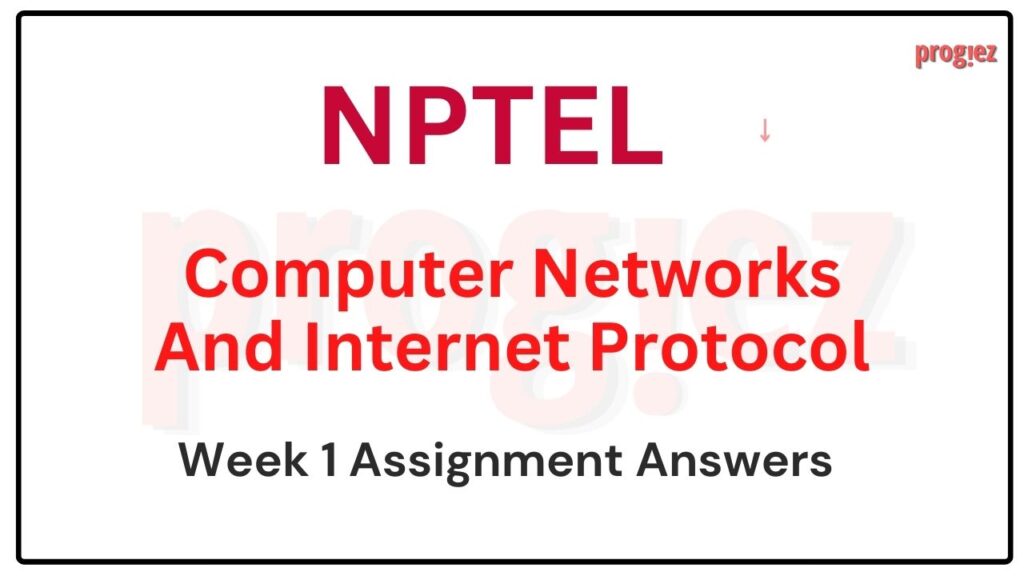Computer Networks And Internet Protocol Week 4 Answers
Are you looking for Nptel Computer Networks And Internet Protocol Week 4 Answers. All weeks assignments available here at Progiez.
Table of Contents

Nptel Computer Networks And Internet Protocol Week 4 Answers (Jan-Apr 2025)
Course link: Click here
Q1. Which statement about choosing a transport protocol based on BDP (Bandwidth Delay Product) is correct?
a) Sliding window protocols always outperform stop-and-wait protocols, regardless of the BDP.
b) When the BDP is smaller than the segment size, a sliding window protocol significantly improves performance.
c) Stop-and-wait protocols are preferred when the BDP is smaller than the segment size to minimize complexity.
d) Selective repeat ARQ should always be chosen over go-back-N ARQ to maximize throughput.
Q2. Which of the following best describes Max-Min Fairness in congestion control?
a) Allocating bandwidth equally to all flows regardless of their requirements.
b) Allocating bandwidth based on the relative priority of each flow, does not ensure optimal network efficiency.
c) Maximizing the minimum bandwidth across all links in the network.
d) Allocating bandwidth so that no flow can increase its allocation without decreasing another flow’s allocation.
Q3. What happens if a TCP transport-layer application attempts to send data before the connection is established?
a) The data is queued until the connection is established.
b) The operation is invalid, and the transport layer prevents it.
c) The data is sent, but the receiver might ignore it.
d) The data is fragmented and sent in packets to the destination.
Q4. Which of the following conditions does not influence the segment size in TCP?
a) Maximum Transmission Unit (MTU) of the underlying link.
b) Receiver’s advertised window size.
c) Network congestion window size.
d) Header length of the IP protocol.
Q5. In the TCP connection release process, why does the active closer enter the TIME-WAIT state after receiving the final acknowledgment?
a) To confirm that the other host has received the FIN message.
b) To allow the passive closer to resend data if needed.
c) To ensure that any delayed packets in the network are discarded.
d) To avoid reusing the same port for a new connection.
Q6. In a distributed system, a server advertises a receiver window of 0 due to lack of buffer space. However, the application frees up space, but the updated acknowledgment is lost. What should the client do to prevent deadlock?
a) Wait indefinitely until the server sends a new acknowledgment.
b) Resend data packets at periodic intervals to elicit a response.
c) Use a keep-alive mechanism to periodically check the buffer status.
d) Close the connection and restart communication.
Q7. A TCP sender observes a mismatch between the advertised window size from the receiver and the available buffer space. Which of the following is True?
a) The receiver has miscalculated the advertised window size.
b) Congestion control mechanisms have reduced the sender’s transmission rate.
c) The sender’s maximum segment size (MSS) is incorrectly set.
d) A delayed acknowledgment has caused the advertised window size to be outdated.
Q8. A transport-layer protocol using AIMD (Additive Increase Multiplicative Decrease) starts with an initial sending rate of 1 Mbps. After four successful additive increases (each adding 0.5 Mbps), it detects packet loss. If the multiplicative decrease factor is 0.5, what will be the new sending rate?
a) 2.5 Mbps
b) 1 Mbps
c) 3 Mbps
d) 1.5 Mbps
Q9. A TCP connection is experiencing high delays and packet reordering. Which features of TCP help maintain reliable and ordered communication in this scenario?
i) Sequence numbers in the TCP header.
ii) Acknowledgment numbers indicating the next expected byte.
iii) The urgent pointer to prioritize packets.
iv) Sliding window flow control.
a) (i), (iii), (iv)
b) (i), (ii), (iii)
c) (ii), (iii), (iv)
d) (i), (ii), (iv)
Q10. In the case of a simultaneous TCP open (both hosts initiate a connection at the same time), which of the following are true?
(i) Both hosts will transition to the SYN-RECEIVED state after exchanging SYN messages.
(ii) The three-way handshake completes with the exchange of SYN+ACK messages.
(iii) Both hosts will immediately move to the ESTABLISHED state after receiving SYN messages.
(iv) Simultaneous open is less secure due to lack of proper sequence number synchronization.
a) (i) and (ii)
b) (iii) and (iv)
c) All are True
d) All are False
For answers or latest updates join our telegram channel: Click here to join
These are Computer Networks And Internet Protocol Week 4 Answers
More Nptel Courses: https://progiez.com/nptel-assignment-answers


